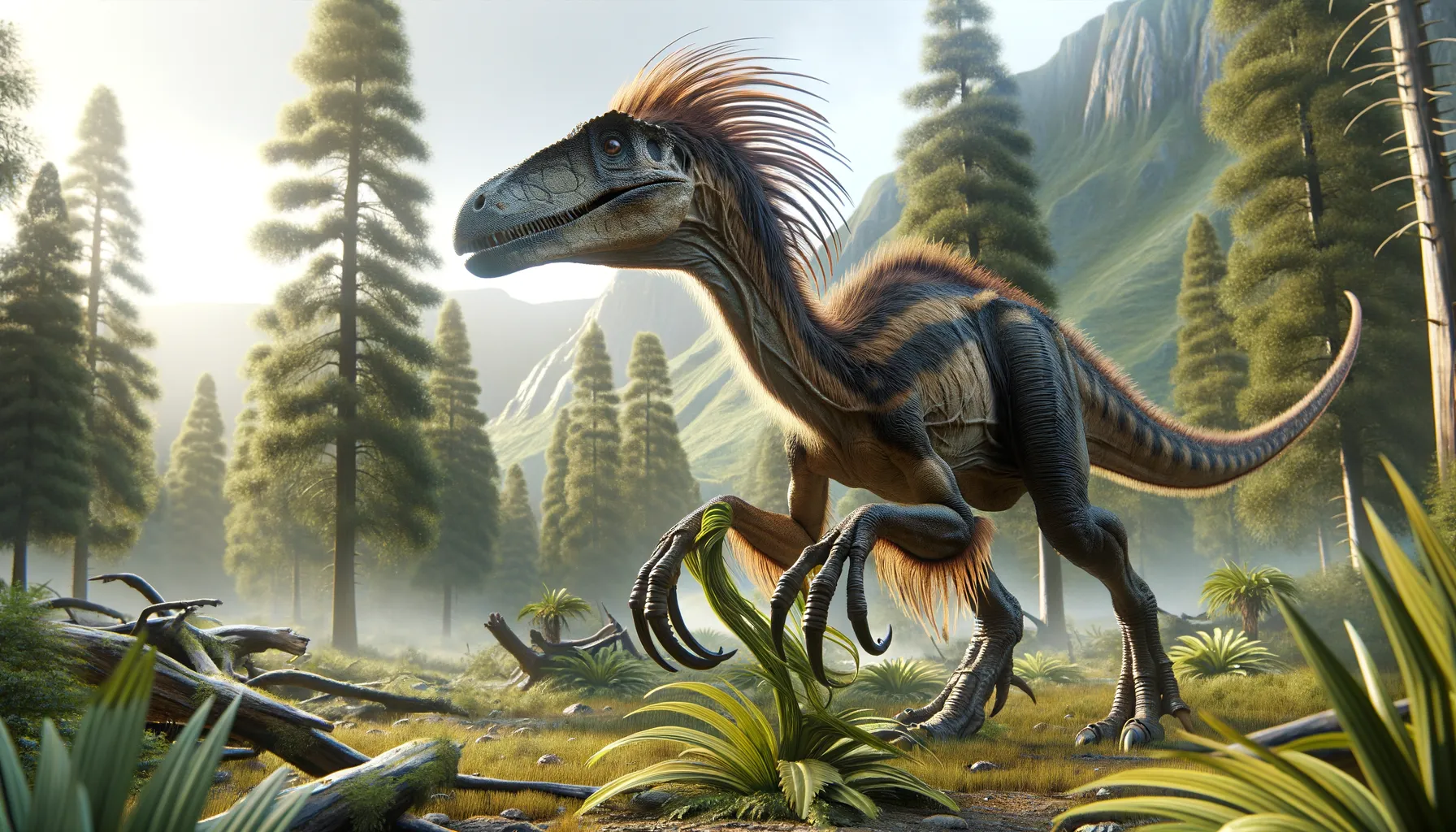
Nothronychus
The gentle giant of the Cretaceous world.
Period
Cretaceous
Length
About 6 meters (20 feet) in length.
Height
Roughly 3 meters (10 feet) tall.
Weight
Around 1,000 kilograms (2,200 pounds).
Nothronychus was an intriguing dinosaur known for its peculiar appearance and herbivorous diet, despite being related to some of the most fearsome carnivores. It lived during the late Cretaceous period and was characterized by long arms with clawed hands, aiding in foraging for plant material. This species provides valuable insights into the diverse adaptations that existed among theropods, traditionally known for being meat-eaters.
Diet
Nothronychus was primarily herbivorous, focusing on a diet consisting of soft leaves, fruits, and perhaps seeds. Its long claws may have helped it pull down branches or strip foliage from trees, allowing it to reach a varied and rich diet in its lush environment.
Hunting
Nothronychus did not hunt for prey as it was a plant-eater. Instead, it spent its time foraging and using its claws and beak-like mouth to gather plant material. This peaceful behavior highlights its divergence from other theropods.
Environmental challenges
Living in North America during the late Cretaceous, Nothronychus faced fluctuating climates and competition for food resources. Rapid environmental changes could affect the availability of its preferred diet, requiring adaptive foraging behaviors. Occasional predators may have posed threats, though its size and possibly social behavior offered some protection.
Speed
Relatively slow due to its bulky build.
Lifespan
Approximately 20 to 30 years.
First discovery
Discovered in the early 2000s, Arizona, USA.
Fun Facts
- Nothronychus was a therizinosaur, a group of unusual theropod dinosaurs known for their long claws and herbivorous diet.
- Despite being a theropod, which is typically associated with meat-eating dinosaurs like T. rex, Nothronychus was likely a plant-eater.
- Nothronychus lived approximately 91 million years ago during the Late Cretaceous period.
- It was discovered in the southwestern United States, an area that would have been a lush, tropical environment during the dinosaur's time.
- Nothronychus had long, clawed fingers that may have been used to pull down branches to reach leaves.
- This dinosaur had a pot-bellied appearance, which helped it digest tough plant materials.
- Nothronychus's discovery challenged the assumption that all theropods were predators, showing the diversity of dinosaur life.
Growth and Development
Nothronychus likely experienced a slow, steady growth rate, reaching maturity over several years. Juveniles might have been more vulnerable to both climate and predation pressures compared to adults. Development stages could influence diet, requiring a shift from softer shoots to more robust vegetation as they aged.
Habitat
Nothronychus inhabited lush, vegetated areas, possibly near water sources, to find abundant plant life. Such environments were crucial for their herbivorous lifestyle, providing both food and protection. These areas likely supported diverse plant and animal life, contributing to a rich ecosystem essential for survival.
Interaction with other species
Nothronychus existed alongside various plant and animal species, contributing to a complex ecosystem. As a herbivore, it could have played a role in seed dispersion and vegetation management. Although relatively passive, interactions with predators would have been critical for survival, particularly for the young and isolated individuals.
Natural lifespan
Their natural lifespan was likely around 20 to 30 years.
Reproduction
Nothronychus likely reproduced through egg-laying, similar to other theropods. Nesting sites would have been strategic, possibly in well-concealed areas to protect from predators. Parental care is speculated, as seen in some birdlike dinosaur species, to ensure juvenile survival.
Social behaviour
While direct evidence is limited, Nothronychus may have exhibited some social behaviors, possibly foraging in groups. Such behavior could provide protection against predators and increase reproductive success. Any social structuring would have aided in survival, teaching younger members foraging and defensive techniques.
Fossil locations
The primary fossils of Nothronychus have been found in North America, especially within the states of Arizona and New Mexico. These areas have provided crucial insights into their anatomy and way of life, revealing much about their unique adaptation in the dinosaur world.
